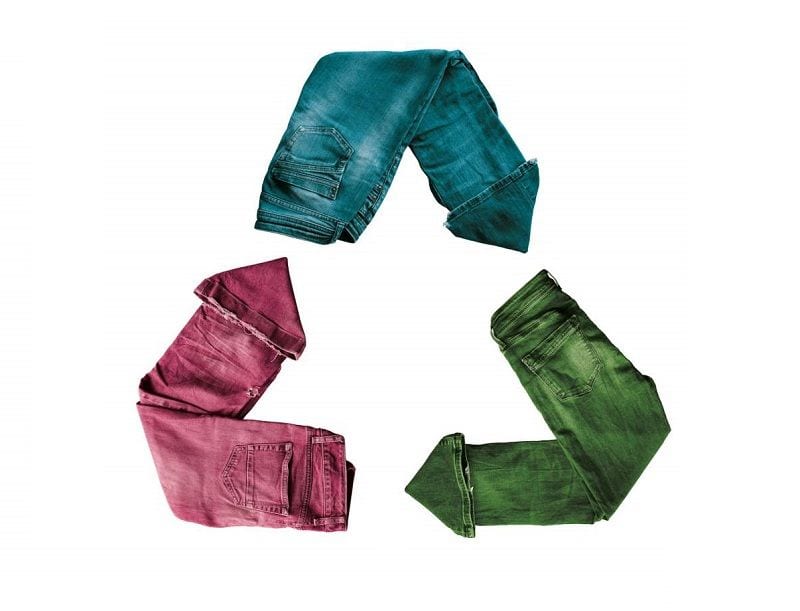Discovering the Surge of Cape Town Sustainable Fashion Brands
Discovering the Surge of Cape Town Sustainable Fashion Brands
Blog Article
Keep Ahead of the Contour by Checking Out Ingenious Style Patterns
In an industry as vibrant as fashion, staying ahead entails greater than just complying with present trends-- it demands an expedition of development. Smart fabrics, as an example, are changing garments into useful work of arts, while 3D printing is revolutionizing style processes with its customizable, waste-reducing abilities. As sustainability comes to be a keystone, developments like environmentally friendly materials and round style techniques are improving environmental responsibility - Cape Town Sustainable Fashion. Additionally, the merging of innovation and fashion heralds a new period of consumer interaction. How, after that, can these arising trends redefine the future of style, and what ramifications do they hold for brand names looking for to flourish in this developing landscape?

Accepting Smart Textiles
In current years, the garment industry has actually experienced a transformative shift with the combination of wise textiles, a sophisticated advancement that blends modern technology with fabric. This evolution stands for not just a fusion of aesthetics and capability however also a significant leap towards sustainability and personalization in fashion. Smart textiles, likewise called e-textiles, installed innovative electronic devices such as sensors and conductive strings within the fabric, enabling garments to engage with the atmosphere or the wearer.
These fabrics are developed to keep track of physiological parameters, such as heart price or body temperature, supplying real-time health and wellness analytics. Past health applications, smart textiles are also being used for flexible garments, which can alter shade or pattern in response to environmental stimulations, therefore providing a vibrant style experience.
Furthermore, the development of energy-harvesting fabrics that create power from activity or sunshine is leading the means for self-dependent wearable innovation. This development is interesting environmentally conscious customers and developers aiming to decrease the environmental impact of fashion. As research and growth in this field development, clever textiles are expected to end up being significantly common, improving the landscape of modern-day fashion with their multifunctional abilities.
The Surge of 3D Printing
Reinventing the manufacturing landscape, 3D printing has actually emerged as a game-changer in the fashion business. This advanced modern technology has allowed designers to push the limits of creative thinking, creating detailed and personalized garments that were formerly unbelievable. By leveraging electronic style and additive manufacturing, 3D printing helps with the creation of intricate geometries and patterns, enabling designers to trying out brand-new structures and frameworks.
A significant advantage of 3D printing in style is its ability to produce on-demand, minimizing waste and lowering inventory requirements. This performance not just maximizes production processes however likewise permits fast prototyping, enabling designers to bring their visions to life in a much shorter duration. Additionally, 3D printing sustains personalization to a level unparalleled by standard approaches, offering individualized fits and special styles customized to individual consumer preferences.
The rise of 3D printing has actually additionally democratized fashion, making it available to arising developers who can currently produce high-grade items without considerable financial investment in conventional manufacturing facilities. As modern technology remains to breakthrough, the style industry is positioned to harness the full potential of 3D printing, exploring new products and techniques that will definitely redefine how style is conceived and generated.
Lasting Fashion Innovations
As the apparel industry faces journalism requirement for ecological obligation, lasting fashion innovations have emerged at the forefront of transformative adjustment. The growing understanding of environmental influence has sustained a shift in the direction of even more eco-conscious practices and products. Developers and brands are currently prioritizing sustainability, integrating techniques that minimize waste and lower carbon footprints.
One significant growth is the rise of circular style, which emphasizes recycling and upcycling to expand the lifecycle of garments. This strategy not just reduces waste but also motivates consumers to embrace an extra mindful strategy to garments usage. Furthermore, official source the usage of sustainable materials, such as organic cotton, hemp, and recycled polyester, has actually gotten traction. These products need less water and power throughout production, substantially reducing environmental influence.
An additional advancement hinges on the fostering of cutting-edge dyeing techniques that utilize natural dyes or waterless procedures, consequently lowering the substantial amounts of water and chemicals commonly utilized in fabric dyeing. Moreover, improvements in biotechnology have resulted in the creation of lab-grown leather and textiles, offering eco friendly and cruelty-free choices to conventional materials. With these pioneering initiatives, the style industry is making meaningful strides in the direction of a more lasting future.

Tech-Integrated Clothing
Tech-integrated clothing represents a groundbreaking blend of style and modern technology, improving exactly how individuals communicate with their clothes. This innovative domain is noted by the addition of wise fabrics and embedded digital parts, improving both performance and visual allure. From physical fitness trackers installed in sports apparel to warmed coats regulated via smart device applications, tech-integrated apparel offers customers unprecedented convenience and adaptability.
Introducing brands are driving this fad, concentrating on creating garments that react to ecological stimuli or user commands. As an example, some garments can change shade or pattern in action to temperature level changes, while others incorporate biometric sensors to keep track of wellness metrics like heart rate or anxiety degrees. The smooth integration of innovation into fabrics likewise encompasses environmental sustainability, with efforts to create self-cleaning textiles or garments that adjust to weather conditions, thus reducing the demand for multiple layers.
In addition, the development of wearable innovation is not just limited to clothing yet includes devices like watches and glasses, more broadening the range of tech-integrated style. As the market proceeds to innovate, the potential for modification and customization in garments grows, providing customers one-of-a-kind, tech-enhanced style experiences that satisfy their specific requirements and choices.
Future of Virtual Fashion
Recently, the future of online fashion has emerged as a transformative force within the sector, leveraging improvements in electronic technology to redefine just how style is created, experienced, and taken in. By incorporating augmented truth (AR), digital truth (VIRTUAL REALITY), and 3D layout devices, developers can currently craft interactive and immersive experiences that transcend conventional fashion borders. Virtual fashion permits the creation of garments that exist solely in electronic settings, providing limitless opportunities for innovation without the constraints of physical manufacturing.
This digital shift not only presents possibilities for imaginative expression yet also addresses sustainability concerns intrinsic in typical style techniques. Cape Town Sustainable Fashion. By getting rid of the need for physical sources, digital fashion visit site reduces waste and reduces carbon impacts. Moreover, the surge of digital style straightens with the enhancing consumer demand for individualized and special experiences, as virtual garments can be tailored and customized to private preferences easily

Verdict
The style market's future lies in the integration of sustainable practices and ingenious technologies. Digital style is poised to redefine customer communications.
In current years, the fashion sector has actually witnessed a transformative change with the combination of wise textiles, an advanced technology that mixes innovation with material.As the fashion industry grapples with the pressing requirement for ecological responsibility, sustainable style advancements have arised at the forefront of transformative modification.In current years, the future of virtual fashion has actually emerged as a transformative force within the industry, leveraging innovations in electronic modern technology to redefine how fashion is created, experienced, and eaten. The rise of digital fashion straightens with the enhancing consumer need for individualized and special experiences, as virtual garments can be customized and customized to private preferences with convenience.
The style sector's future lies in the assimilation of lasting techniques and cutting-edge modern technologies.
Report this page